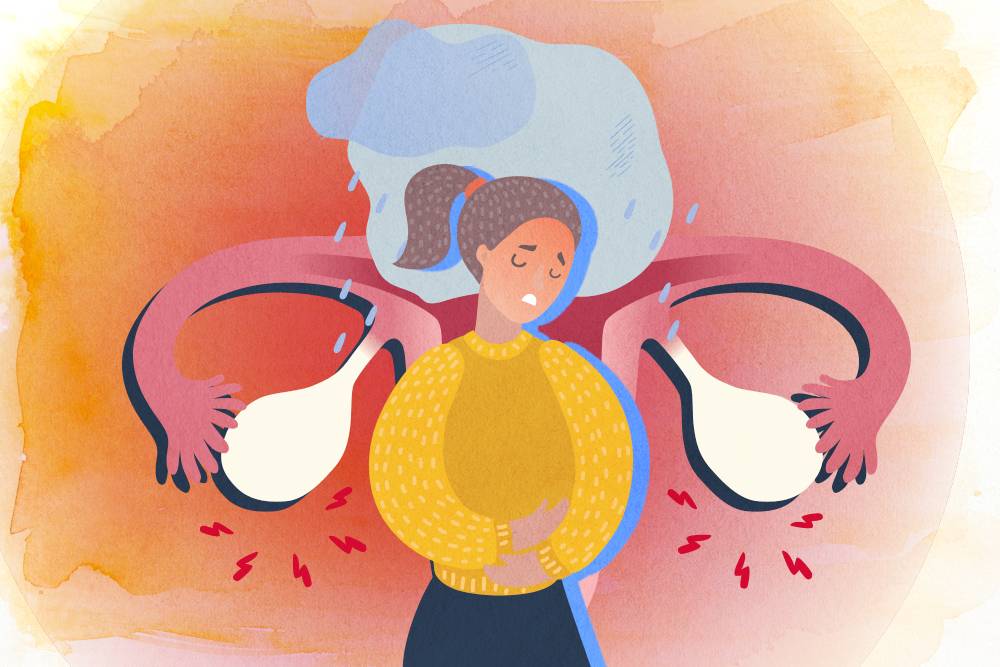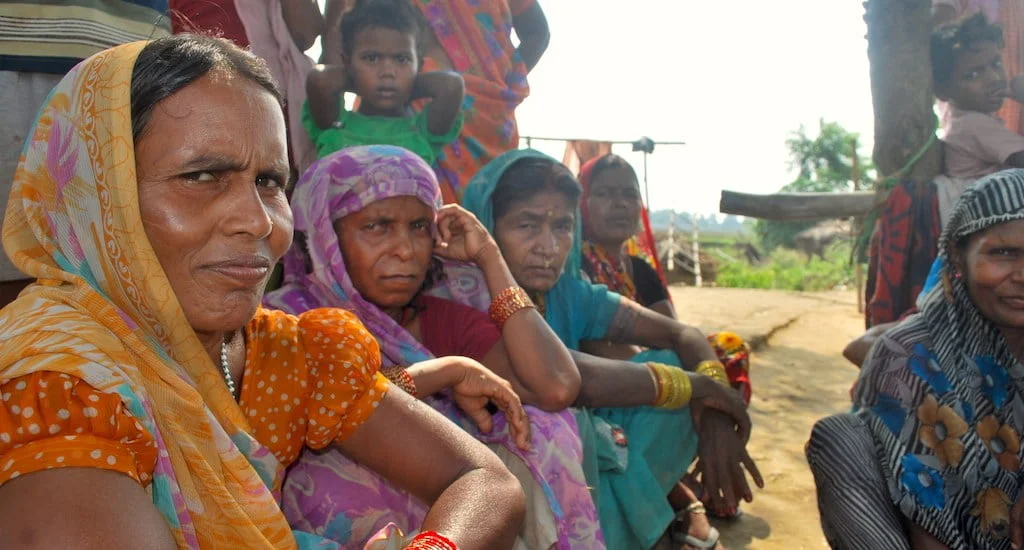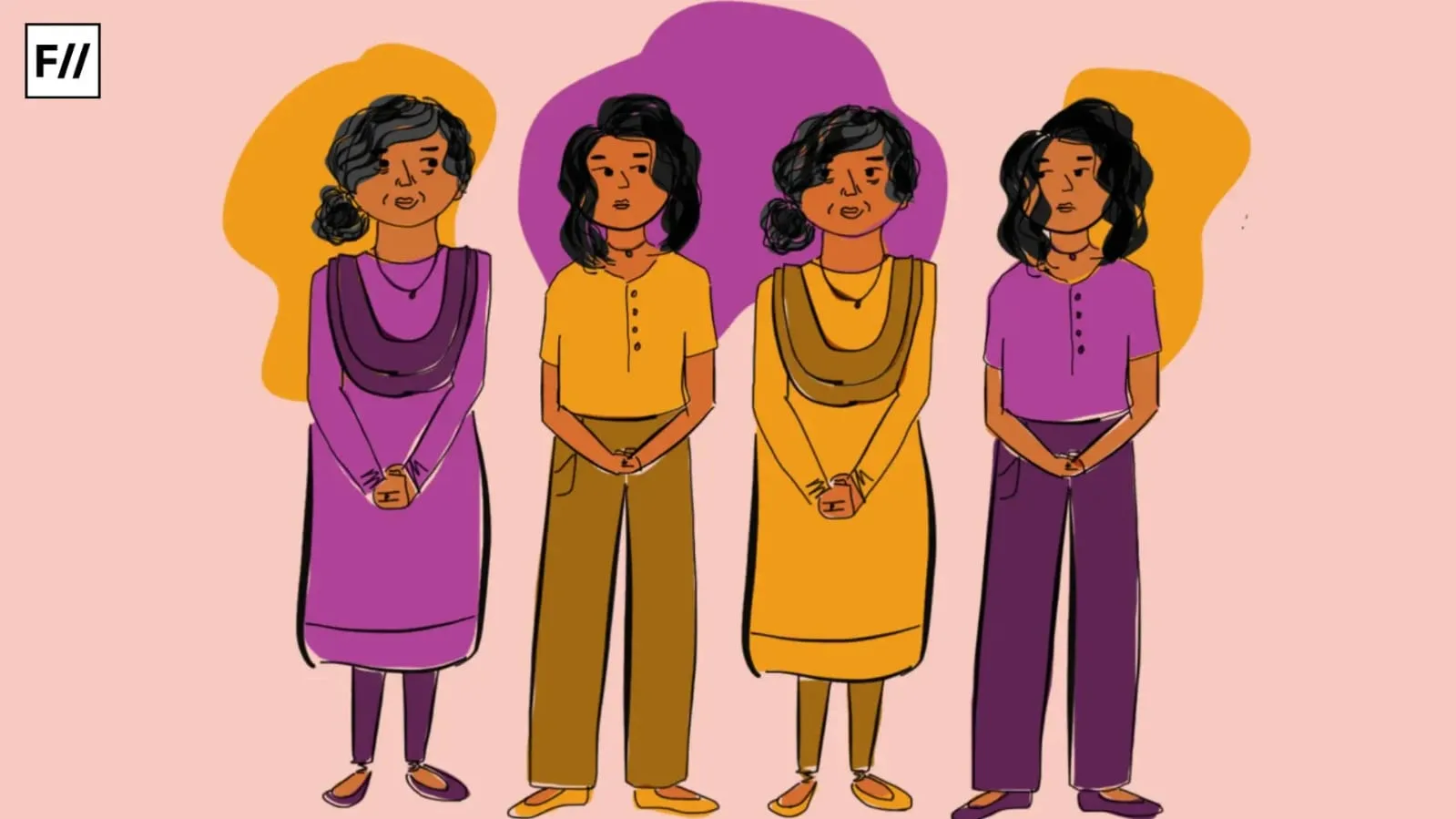Editor’s Note: This month, that is May 2020, FII’s #MoodOfTheMonth is Menstrual Health, where we invite various articles about various experiences that revolve around menstruation or the absence of the same. If you’d like to share your article, email us at pragya@feminisminindia.com.
Trigger Warning: Suicide
Premenstrual syndrome (PMS) is the term for certain symptoms that menstruators experience a week or two before the onset of their periods. Most individuals who menstruate are familiar with at least a few of these which can be physical as well mental, including bloating, swelling, fatigue, muscle aches, anxiety, irritability, feeling of being overwhelmed, among others. Not long ago, another term Premenstrual Dysphoric Disorder (PMDD) came about to explain the experiences of these symptoms in a more intense way. In the next few sections, we will discuss PMS, PMDD, its effects and perceptions as explained by feminists and the way forward.

Understanding PMS And PMDD
PMDD is a condition which can be characterised by a severe form of PMS. While most PMS symptoms are common and easily dealt with, PMDD differs because of the intensity of emotional and physical symptoms which become interfering to the functioning of the individual. The individual with PMDD might feel extremely irritable, anxious, moody, and depressed, at the same time, some physical symptoms like migraines and fatigue may get so debilitating that day to day activities may seem difficult to get through. It becomes extremely crucial to understand PMDD since suicide ideation is an extremely real symptom, and various studies have highlighted the urgent need to address the suicidal patterns of thinking related to the condition.
PMDD is a condition which can be characterised by a severe form of PMS. While most PMS symptoms are common and easily dealt with, PMDD differs because of the intensity of emotional and physical symptoms which become interfering to the functioning of the individual. The individual with PMDD might feel extremely irritable, anxious, moody, and depressed, at the same time, some of the physical symptoms like migraines and fatigue may get so debilitating that day to day activities may seem difficult to get through.
Little is known about the causes behind PMS and PMDD and the public awareness of the condition is also extremely low. This scenario itself reveals something crucial to us. For one, this shows us that not enough attention is paid to research regarding menstrual health, and whatever information exists is not easily available to the general public. Secondly, PMS and PMDD which fall in the ambit of menstruation and mental health find double the stigma attached to the acknowledgement and the diagnosis and possible treatment.
In India, menstruation itself is a topic that is now finding more open discussions; however, hushed conversations, rituals and superstitions still persist. One cannot ignore the unequal access to hygienic and sustainable menstrual products either; the dropout rate for girls from their schools because of the inability of being able to manage periods due to lack of proper infrastructure and facilities is a major cause of concern as well. Hence, the very acknowledgement of the physical, emotional, and psychological experiences becomes a challenge.
Also read: Why Premenstrual Dysphoric Disorder Is Not Your Regular PMS?
The Perception of PMS and PMDD
The intersection of menstruation and mental health where we find PMS and PMDD is fraught with the dilemmas. Let us take, for instance, the discussion on menstrual leaves in the workplace. People supporting the idea usually say that it is important to understand what menstruators experience during the cycles, and it is crucial to provide them with leaves to cope with any difficulties they may face. On the other hand, some menstruators against the leaves say that they do not wish for any differential treatment that may undermine the perception of their ability to work, considering they may already be working extra to prove their abilities due to the gender.
Similarly, phrases like, “Oh, you seem moody. Are you PMSing?” creates discomfort which trivialises the expressions of emotions vs the expressions of experiences due to PMS and PMDD. This infantilising of womxn’s experience and reducing it to PMS and PMDD leaves little space for separate discussion for both. It is therefore, no surprise, that many menstruators may not want to discuss their PMS and PMDD experiences.
Feminists have time and again argued for re-evaluating the understanding of PMS and PMDD. One of the arguments is regarding diagnosis. There are a number of stories of misdiagnosis when it comes to various problems regarding menstruation, and that’s more so with PMDD. Menstruators are often told by their families, peers and even professionals to endure the physical and emotional pain that they experience due to menstruation. The idea of the endurance of pain as a natural characteristic of being a ‘woman’, itself needs questioning.
Feminists have time and again argued for re-evaluating the understanding of PMS and PMDD. One of the arguments is regarding diagnosis. There are a number of stories of misdiagnosis when it comes to various problems regarding menstruation, and that’s more so with PMDD. Menstruators are often told by their families, peers and even professionals to endure the physical and emotional pain that they experience due to menstruation. The idea of the endurance of pain as a natural characteristic of being a ‘woman’, itself needs questioning.
The emotional and psychological experiences are often disregarded as “women’s issues” or something that ‘women’ go through because they are being “emotional and irrational”. Such ideas date back to centuries along with “hysteria” and the sexism which is often clear in science and medicine. This also brings about the problem of how understanding and diagnosis can be exclusive of all sexes and gender identities, discussing only cis-gender women and those who are considered “women”.
At the same time, some feminists argue against the catch-all nature of diagnosis regarding PMS and PMDD. According to them, to diagnose is to also label experiences as disorder or illness which then fail to acknowledge the societal influence on sex and gender. Further, they discuss how there is the medicalisation of experiences which may not sufficiently discuss cultural differences. However, one could also argue that the medical and psychological nature of PMS and PMDD could open up the doors for acknowledgement of experiences with correct diagnosis and treatment, further resulting in battling the stigma around menstruation and mental health.
The Way Forward
While PMS is highly common, PMDD requires a diagnosis due to the fact that it is disruptive to the person experiencing it. However, in India, the awareness about PMDD among most health professionals and the general public is still low. Awareness is being brought online, primarily on social media and by groups and organisations, like Beyond Blood which is based on the Menstrual-Mental Health Movement, founded to elevate the medical discourse and social discussion to address erasure of menstrual experiences and the disregard for holistic well-being.
Anuhya Korrapati, the founder says that PMDD diagnosis requires three months of observation of the symptoms and consultations with medical and mental health professionals. Therefore, consulting doctors who may be able to give such a diagnosis might be inaccessible in terms of resources. Self-diagnosis tends to be tricky, since it becomes difficult to be objective about your own experiences and medical criteria, in addition to other conditions that one might be experiencing.
If an individual identifies with the symptoms of PMDD, Korrapati suggests peer support which can be discovered easily on Instagram, Facebook and Reddit, one can try #pmddpeeps for starters. Peer supporters have experience with PMS and PMDD themselves and are trained to provide support to individuals who might be having difficulty in coping. Tracking one’s symptoms might prove useful too, to understand the patterns and the intensity of their experiences.
To know more about PMS and PMDD one can visit The International Association For Premenstrual Disorders which has resources about PMS and PMDD and for peer support. There are also a number of podcasts available for instance Period Podcast, Healing Hormones, The PMDD Diaries, It’s Not You, It’s Me- A PMDD Podcast among others. While these resources may not “fix” problems, they are a gentle reminder that you are not alone in your experience and there is plenty of support and acceptance available out there!
References
- Premenstrual dysphoric disorder: General overview, treatment strategies, and focus on sertraline for symptom-onset dosing Andrade C
- ‘Just periods’: How link between PMDD, an extreme form of PMS, and depression is trivialised, lacks awareness in India
Featured Image Source: Global News
About the author(s)
A spoken word poet, writer and a graphic design enthusiast, studying education. Passionate about a wide range of things, anywhere from political theory to queer representation to artificial intelligence.





Let me add how long PMDD lasts – anywhere from 3 days to about 2 weeks before menstruation. The symptoms listed are indicative and not exhaustive. Medicines provide relief for up to a certain period. We need more research, mainstreaming and inclusitivity. How are individuals supposed to hold down a job when one is incapacitated for half the month? How can you manage a problem that is not recognised? PMDD has been termed living a half-life, given that one has to put in double the effort for half the success in life.